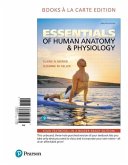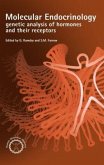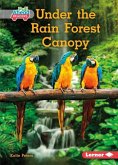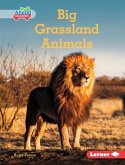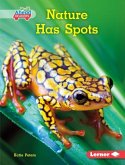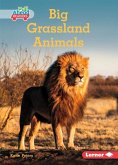Biomechanics in Animal Behaviour
Herausgeber: Blake, R W; Domenici, P.
Biomechanics in Animal Behaviour
Herausgeber: Blake, R W; Domenici, P.
- Gebundenes Buch
- Merkliste
- Auf die Merkliste
- Bewerten Bewerten
- Teilen
- Produkt teilen
- Produkterinnerung
- Produkterinnerung
Biomechanics in Animal Behaviour offers a unique approach by integrating fully the fields of animal behaviour and biomechanics.
Andere Kunden interessierten sich auch für
![Essentials of Human Anatomy & Physiology Essentials of Human Anatomy & Physiology]() Elaine MariebEssentials of Human Anatomy & Physiology200,99 €
Elaine MariebEssentials of Human Anatomy & Physiology200,99 €![Nutrition & You Nutrition & You]() Joan BlakeNutrition & You247,99 €
Joan BlakeNutrition & You247,99 €![Molecular Endocrinology Molecular Endocrinology]() Molecular Endocrinology204,99 €
Molecular Endocrinology204,99 €![Under the Rain Forest Canopy Under the Rain Forest Canopy]() Katie PetersUnder the Rain Forest Canopy11,99 €
Katie PetersUnder the Rain Forest Canopy11,99 €![Big Grassland Animals Big Grassland Animals]() Katie PetersBig Grassland Animals31,99 €
Katie PetersBig Grassland Animals31,99 €![Nature Has Spots Nature Has Spots]() Katie PetersNature Has Spots31,99 €
Katie PetersNature Has Spots31,99 €![Big Grassland Animals Big Grassland Animals]() Katie PetersBig Grassland Animals11,99 €
Katie PetersBig Grassland Animals11,99 €-
-
-
Biomechanics in Animal Behaviour offers a unique approach by integrating fully the fields of animal behaviour and biomechanics.
Hinweis: Dieser Artikel kann nur an eine deutsche Lieferadresse ausgeliefert werden.
Hinweis: Dieser Artikel kann nur an eine deutsche Lieferadresse ausgeliefert werden.
Produktdetails
- Produktdetails
- Verlag: Taylor & Francis
- Seitenzahl: 360
- Erscheinungstermin: 15. Juni 2000
- Englisch
- Abmessung: 238mm x 162mm x 24mm
- Gewicht: 794g
- ISBN-13: 9781859961629
- ISBN-10: 1859961622
- Artikelnr.: 21277509
- Herstellerkennzeichnung
- Libri GmbH
- Europaallee 1
- 36244 Bad Hersfeld
- gpsr@libri.de
- Verlag: Taylor & Francis
- Seitenzahl: 360
- Erscheinungstermin: 15. Juni 2000
- Englisch
- Abmessung: 238mm x 162mm x 24mm
- Gewicht: 794g
- ISBN-13: 9781859961629
- ISBN-10: 1859961622
- Artikelnr.: 21277509
- Herstellerkennzeichnung
- Libri GmbH
- Europaallee 1
- 36244 Bad Hersfeld
- gpsr@libri.de
Blake, R.W.; Domenici, P.
BIOMECHANICS IN BEHAVIOUR. Introduction. Behavioural biomechanics in
organismal biology. Behaviour and the mechanical properties of the
environment, certain animal structures and tools. Conclusions. BIOMECHANICS
AND BEHAVIOUR: ANALYZING THE MECHANISTIC BASIS OF MOVEMENT FROM AN
EVOLUTIONARY PERSPECTIVE. Introduction. Phylogeny and the study of
biomechanics and behavior. Two case studies. Discussion and prospectus.
INTERMITTENT LOCOMOTOR BEHAVIOUR ALTERS TOTAL WORK. Introduction.
Predictions from biomechanics and energetics based on laboratory studies of
steady-state locomotor behavior. Predictions based on laboratory studies on
non-steady-state locomotor behavior. Testing laboratory-based predictions
from mechanics and energetics by measuring locomotor behavior in the field.
Generality of the consequences of intermittent locomotor behavior in other
ectotherms. Conclusion. WALKING AND RUNNING STRATEGIES FOR HUMANS AND OTHER
MAMMALS. Introduction. Gaits and speeds. Routes. Taking risks. FISH
SWIMMING BEHAVIOUR: PREDICTIONS FROM PHYSICAL PRINCIPLES. Introduction.
Gaits as basic swimming behaviours. Simple swimming behaviours. Complex
behaviours. From individual behaviours to whole organisms. Conclusions and
future studies. THE BIOMECHANICS OF INTERMITTENT SWIMMING BEHAVIOURS IN
AQUATIC VERTEBRATES. Introduction. Burst-and-coast swimming. Energy
efficient swimming strategy in negatively buoyant fish. Porpoising. Flying
fish. Conclusion. Notation. BIRD MIGRATION PERFORMANCE ON THE BASIS OF
FLIGHT MECHANICS AND TRIGONOMETRY. Introduction. Gliding and flapping
birds. Speed of migration. Range and fuel load. The triangle of velocities.
Migration by vector summation. Routes on a globe. Final remark. Appendix:
List of symbols. AERODYNAMICS AND BEHAVIOUR OF MOULT AND TAKE-OFF IN BIRDS.
Introduction. Avian moult. Take-off in birds. Moult and take-off.
Discussion. THE PHYSICS OF CHEMORECEPTION REVISITED: HOW THE ENVIRONMENT
INFLUENCES CHEMICALLY MEDIATED BEHAVIOUR. Introduction.
organismal biology. Behaviour and the mechanical properties of the
environment, certain animal structures and tools. Conclusions. BIOMECHANICS
AND BEHAVIOUR: ANALYZING THE MECHANISTIC BASIS OF MOVEMENT FROM AN
EVOLUTIONARY PERSPECTIVE. Introduction. Phylogeny and the study of
biomechanics and behavior. Two case studies. Discussion and prospectus.
INTERMITTENT LOCOMOTOR BEHAVIOUR ALTERS TOTAL WORK. Introduction.
Predictions from biomechanics and energetics based on laboratory studies of
steady-state locomotor behavior. Predictions based on laboratory studies on
non-steady-state locomotor behavior. Testing laboratory-based predictions
from mechanics and energetics by measuring locomotor behavior in the field.
Generality of the consequences of intermittent locomotor behavior in other
ectotherms. Conclusion. WALKING AND RUNNING STRATEGIES FOR HUMANS AND OTHER
MAMMALS. Introduction. Gaits and speeds. Routes. Taking risks. FISH
SWIMMING BEHAVIOUR: PREDICTIONS FROM PHYSICAL PRINCIPLES. Introduction.
Gaits as basic swimming behaviours. Simple swimming behaviours. Complex
behaviours. From individual behaviours to whole organisms. Conclusions and
future studies. THE BIOMECHANICS OF INTERMITTENT SWIMMING BEHAVIOURS IN
AQUATIC VERTEBRATES. Introduction. Burst-and-coast swimming. Energy
efficient swimming strategy in negatively buoyant fish. Porpoising. Flying
fish. Conclusion. Notation. BIRD MIGRATION PERFORMANCE ON THE BASIS OF
FLIGHT MECHANICS AND TRIGONOMETRY. Introduction. Gliding and flapping
birds. Speed of migration. Range and fuel load. The triangle of velocities.
Migration by vector summation. Routes on a globe. Final remark. Appendix:
List of symbols. AERODYNAMICS AND BEHAVIOUR OF MOULT AND TAKE-OFF IN BIRDS.
Introduction. Avian moult. Take-off in birds. Moult and take-off.
Discussion. THE PHYSICS OF CHEMORECEPTION REVISITED: HOW THE ENVIRONMENT
INFLUENCES CHEMICALLY MEDIATED BEHAVIOUR. Introduction.
BIOMECHANICS IN BEHAVIOUR. Introduction. Behavioural biomechanics in
organismal biology. Behaviour and the mechanical properties of the
environment, certain animal structures and tools. Conclusions. BIOMECHANICS
AND BEHAVIOUR: ANALYZING THE MECHANISTIC BASIS OF MOVEMENT FROM AN
EVOLUTIONARY PERSPECTIVE. Introduction. Phylogeny and the study of
biomechanics and behavior. Two case studies. Discussion and prospectus.
INTERMITTENT LOCOMOTOR BEHAVIOUR ALTERS TOTAL WORK. Introduction.
Predictions from biomechanics and energetics based on laboratory studies of
steady-state locomotor behavior. Predictions based on laboratory studies on
non-steady-state locomotor behavior. Testing laboratory-based predictions
from mechanics and energetics by measuring locomotor behavior in the field.
Generality of the consequences of intermittent locomotor behavior in other
ectotherms. Conclusion. WALKING AND RUNNING STRATEGIES FOR HUMANS AND OTHER
MAMMALS. Introduction. Gaits and speeds. Routes. Taking risks. FISH
SWIMMING BEHAVIOUR: PREDICTIONS FROM PHYSICAL PRINCIPLES. Introduction.
Gaits as basic swimming behaviours. Simple swimming behaviours. Complex
behaviours. From individual behaviours to whole organisms. Conclusions and
future studies. THE BIOMECHANICS OF INTERMITTENT SWIMMING BEHAVIOURS IN
AQUATIC VERTEBRATES. Introduction. Burst-and-coast swimming. Energy
efficient swimming strategy in negatively buoyant fish. Porpoising. Flying
fish. Conclusion. Notation. BIRD MIGRATION PERFORMANCE ON THE BASIS OF
FLIGHT MECHANICS AND TRIGONOMETRY. Introduction. Gliding and flapping
birds. Speed of migration. Range and fuel load. The triangle of velocities.
Migration by vector summation. Routes on a globe. Final remark. Appendix:
List of symbols. AERODYNAMICS AND BEHAVIOUR OF MOULT AND TAKE-OFF IN BIRDS.
Introduction. Avian moult. Take-off in birds. Moult and take-off.
Discussion. THE PHYSICS OF CHEMORECEPTION REVISITED: HOW THE ENVIRONMENT
INFLUENCES CHEMICALLY MEDIATED BEHAVIOUR. Introduction.
organismal biology. Behaviour and the mechanical properties of the
environment, certain animal structures and tools. Conclusions. BIOMECHANICS
AND BEHAVIOUR: ANALYZING THE MECHANISTIC BASIS OF MOVEMENT FROM AN
EVOLUTIONARY PERSPECTIVE. Introduction. Phylogeny and the study of
biomechanics and behavior. Two case studies. Discussion and prospectus.
INTERMITTENT LOCOMOTOR BEHAVIOUR ALTERS TOTAL WORK. Introduction.
Predictions from biomechanics and energetics based on laboratory studies of
steady-state locomotor behavior. Predictions based on laboratory studies on
non-steady-state locomotor behavior. Testing laboratory-based predictions
from mechanics and energetics by measuring locomotor behavior in the field.
Generality of the consequences of intermittent locomotor behavior in other
ectotherms. Conclusion. WALKING AND RUNNING STRATEGIES FOR HUMANS AND OTHER
MAMMALS. Introduction. Gaits and speeds. Routes. Taking risks. FISH
SWIMMING BEHAVIOUR: PREDICTIONS FROM PHYSICAL PRINCIPLES. Introduction.
Gaits as basic swimming behaviours. Simple swimming behaviours. Complex
behaviours. From individual behaviours to whole organisms. Conclusions and
future studies. THE BIOMECHANICS OF INTERMITTENT SWIMMING BEHAVIOURS IN
AQUATIC VERTEBRATES. Introduction. Burst-and-coast swimming. Energy
efficient swimming strategy in negatively buoyant fish. Porpoising. Flying
fish. Conclusion. Notation. BIRD MIGRATION PERFORMANCE ON THE BASIS OF
FLIGHT MECHANICS AND TRIGONOMETRY. Introduction. Gliding and flapping
birds. Speed of migration. Range and fuel load. The triangle of velocities.
Migration by vector summation. Routes on a globe. Final remark. Appendix:
List of symbols. AERODYNAMICS AND BEHAVIOUR OF MOULT AND TAKE-OFF IN BIRDS.
Introduction. Avian moult. Take-off in birds. Moult and take-off.
Discussion. THE PHYSICS OF CHEMORECEPTION REVISITED: HOW THE ENVIRONMENT
INFLUENCES CHEMICALLY MEDIATED BEHAVIOUR. Introduction.


